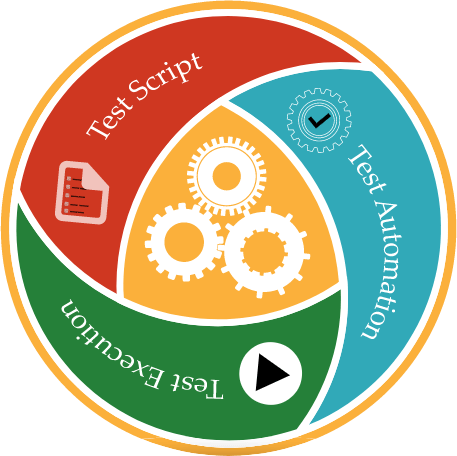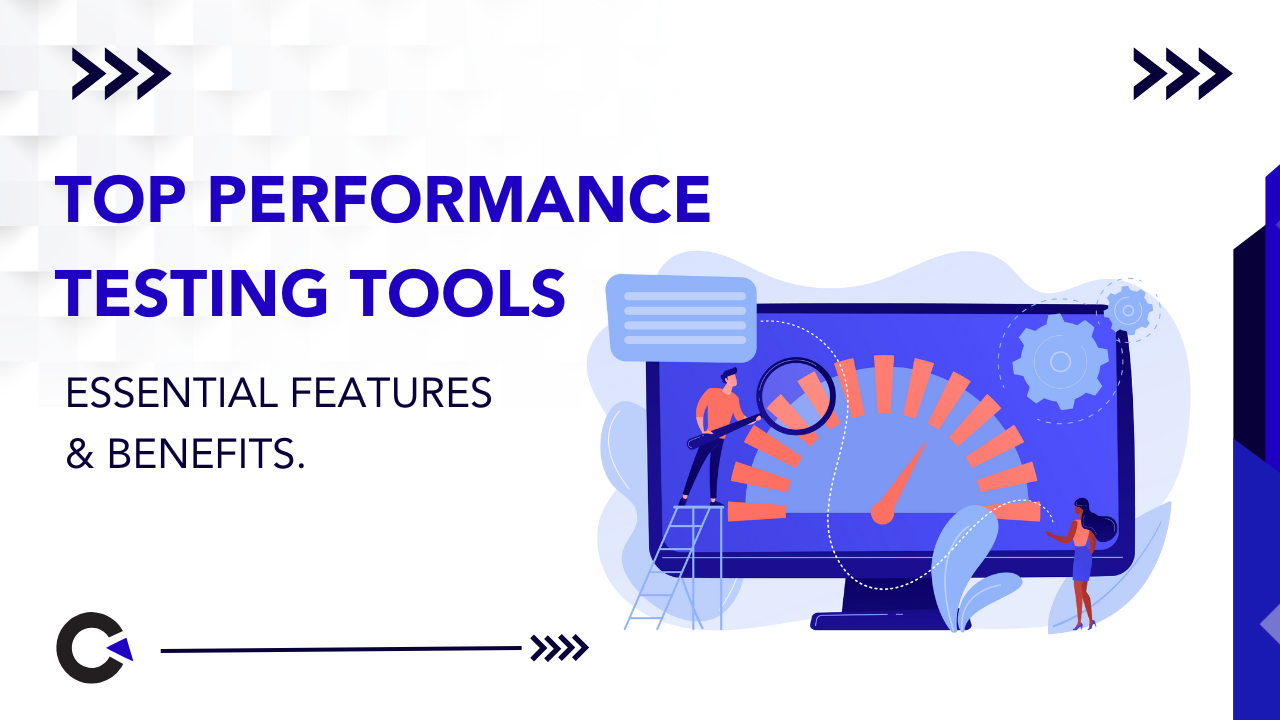
by admin | Jul 11, 2019 | Software Testing, Fixed, Blog |
Constant demand for high quality software applications and packages drives the multi-million Dollar software Quality Assurance industry. Veteran testers maintain the opinion that software testing is never complete and the scope for further testing remains relentless. However, the commercial compulsions that operate in the industry demand low prices for QA Services and adherence to sharp delivery timelines provided by clients. This matrix compels Software Testing professionals to deploy risk-based analyses to locate the areas of software development that must be targeted with exhaustive testing procedures. Therefore, we may say the quality of testing emerges as a prime objective for the modern Software Testing Company.
Quality is King
Testing organizations that offer QA Services must prize top quality of work when the choice is to provide the best services to clients. This realization has forced a calibrated overhaul of assessing the impact of Software Testing services. Such overhaul tends to commence with a change in mind set wherein a Software Testing Company encourages computer code testers to pool their creative resources and brainpower with a view to elevate the quality of rendered services. In line with this, Software Testing engineers must share their technical knowledge and review testing scenarios and test cases. The outcomes can include superb quality of testing, often resulting in clear instances of client delight.

Numbers can deceive
Professionals who undertake Software Testing activities must acknowledge that pure numbers, when used to assess the professional performance of a tester, can lead to eventual disruptions in service delivery. A test professional, for instance, can review a large number of bugs and initiate remedies to eliminate such glitches. However, this approach can earn his or her employer – the Software Testing Company – the proverbial bad name when the functionality of the tested software application fails to impress, owing to low quality of bug resolution. The only true remedy that can negate such a situation is to deliver a product that excels in terms of quality. This lodestone, centered on quality, should emerge as a defining feature of the metrics that define Software Testing systems and practices.
An Eye on Profit
Every Software Testing Company must remain commercially viable before it establishes a presence in the software testing market. In this context, it is obvious that the state quality of services would equal a growing profit margin. Therefore, management teams must impress this fact on Quality Assurance professionals, and such learning must be implemented in the work day practices of each individual tester. Essentially, high quality outcomes must drive Software Testing activities, which include collecting requirements, defining the scope of software testing, work allocation, co-ordination between different work teams, and more.
Customer Satisfaction
p>Every QA Company worth its proverbial salt must strive to drive high levels of customer satisfaction. In line with this, Quality Assurance professionals must build and create clear priorities when planning the scope of testing activities. A different strategy emerges when QA Services engineers begin with the question – what does the customer want? This query, as a starting point, can serve to inform and enrich the quality of Software Testing services in the modern context. The query serves as the archetypal lodestone that guides the actions of a Software Testing Company when decisions must be taken to take testing projects into maturity stages.

Target: Root Causes
Quality Assurance practices must center on seeking the root causes of a software glitch. This approach allows Software Testing professionals to effect a permanent remediation of a glitch, thereby elevating the level of quality services rendered to clients. Such an approach must be promoted highly when a Software Testing Company compiles its list of best practices. Root causes must also feature when Quality Assurance professionals write test cases prior to embarking on software testing activities. Each test case must be constructed to test the software application from multiple points of view, thereby covering all the requirements listed in the work brief provided by the client. In time, such practices will eradicate the worst of software glitches and result in client delight.
Be the Best Tester!
High levels of motivation and technical skills can combine to work wonders when Quality Assurance professionals apply themselves to their duties. This implies a personal stance predisposed to quick and constant learning, a passion for testing software applications, decent communication skills, understanding the priorities of the testing landscape, an ability to think through technical problems, and much more. These attributes can empower a Quality Assurance professional to perform at peak power, and drive outstanding results in projects undertaken by a Software Testing Company.
In Conclusion
The rationale and logic mentioned above drive a solid case for choosing quality over quantity in the domain of modern Quality Assurance services. In line with this, every Software Testing Company must make it mandatory for testers to undergo appropriate training and sensitization modules that spotlight the core necessity of quality in services rendered to clients. Pursuant to such actions, the modern Software Testing industry can undergo tectonic shifts that may raise standards across the industry. When you seek both quality and quantity, connect with us and experience the difference.

by admin | Jul 10, 2019 | E-Learning Testing, Fixed, Blog |
As the new buzzword in education, E-Learning promises the moon in terms of expanding the scope of modern learning and education. This concept, premised on digital technologies, is designed to demolish distance and offer learners a calibrated method of transmitting all forms of knowledge. High quality e-learning content can literally work wonders by catering to the exacting requirements of various audiences located in different parts of the planet. With this as the premise, ELearning Testing remains critical in enabling such a mammoth mission. We analyze some of the best attributes that distinguish a group of successful e-learning collaborators.
Collaborative Learning Culture
This remains critical to the eventual success of a modern e-learning program. Each member of an e-learning team must bring forth unique ideas and concepts that may spur the enterprise of learning and education. E-Learning App Testing therefore, remains vital to this goal by facilitating a smooth exchange of ideas, providing a platform to share tips and information, and enabling high levels of knowledge retention. This implies that E-Learning must necessarily rest on foundations distinguished by fluid digital technologies, thereby allowing E-Learning ideas to mature and gain wider traction in terms of group learning systems and exercises.
Driving Innovation
The digital domain essentially thrives on the life blood of innovation and disruption. E-Learning, as a child of this domain, thrives on innovation built into every e-learning program or digital learning framework. Therefore, ELearning App Testing becomes critical in terms of generating assurance that learners would be able to access the best information minus any encounters with glitches or bugs that mar software functionality. Testing professionals must bear this in mind because their work, once successfully accomplished, promotes the core ideas that animate the modern concept of e-learning. In line with this, ELearning App Testing must cover every aspect of functionality engineered into an e-learning framework.

Lifelong Learning Mindset
Team members that participate in e-learning programs must inculcate a mindset that promotes continuous learning. This attitude dovetails with the wider e-learning industry that is constantly generating new content and delivering the same over digital platforms. In this scenario, E-Learning Testing assumes criticality by empowering the smooth transmission of knowledge to all stakeholders. Therefore, testers must maintain and refine testing methodologies that promote continuity in learning programs, while upholding the integrity of the underlying code that powers an E-Learning platform. Additionally, team members must volunteer to offer feedback to E-Learning App Testing engineers with a view to improve the quality of content and functionalities that stimulate delivery platforms.
Effective Leadership
The stewards of a modern e-learning program must exert themselves to create effective steering mechanisms that promote the essence of e-learning systems and frameworks. In this context, E-Learning App Testing assumes criticality because such activities play a central role in enabling an invaluable steering mechanism. Team members who undertake ELearning Testing initiatives must acquaint themselves with the content flow and tone, and the possible impact of such content on students and learners. In effect, E-Learning App Testing must rise from the rut of mechanized testing into an activity that rouses the full engagement of the mental faculties and skillsets of testing professionals.
Diverse Strengths
Team persons who undertake E-Learning App Testing must possess and be able to utilize diverse skills and capabilities to their job. Therefore, such a team must comprise competent authors of E-Learning content, instructional designers of repute, graphic designers that know their craft and E-Learning App Testing professionals who implement multiple testing approaches into their work schedules. These attributes can complement each other and create a virtuous cycle that promotes success in e-learning ventures, and additionally such qualities allow E-Learning teams to learn from the combined skillsets, thereby elevating the quality of their input into the construction of a modern E-Learning module.
Project Management
It is vital for E-Learning App Testing professionals to implement effective project management practices. This approach empowers E-Learning Testing engineers to actively enforce conformity to the commercial mandate of delivering functional digital learning systems within a given timeframe. Veteran testers corroborate the fact that such practices galvanise the testing community into delivering high value in terms of E-Learning Testing plans and activities. In addition, effective project management allows testing organizations to elevate the quality of their deliverables in multiple projects, thereby eliciting client delight and big increases in the bottom line of the business organization.

In Conclusion
This outlines some of the attributes that distinguish the actions and mindset of a successful E-Learning App Testing team. The leaders and managers of such teams should strive to gain familiarity with the ultimate objective of e-learning initiatives, since such familiarity can empower them to make sustained contributions to the cause of modern education delivered via digital channels. Further, E-Learning Testing professionals may invest their efforts in exploring alternative mechanisms of delivering e-learning modules via digital platforms. These may include innovative new apps that reside in smartphones and connected tablets, thus allowing users to absorb information at their own pace. We have consistently helped clients attain new standards in this realm – connect with us to know more.

by admin | Jul 8, 2019 | Automation Testing, Fixed, Blog |
As a software testing technique, automation testing eliminates the human component in software testing practices. Such testing systems hinge on writing test scripts and applying these inside the automation framework. In modern times, testing professionals rely on test automation to automate repetitive tasks and other testing actions that are difficult to perform in manual mode.
Clear Reports
The framework of modern automation testing includes powerful dashboards that promote visibility into the progress registered by various test processes. These dashboards empower all stakeholders in the testing process to access test information in real time. Such visibility (and reporting) also allows test engineers to drive the various planks that ensure a successful software release.
Reusability of Test Scripts
The best QA companies can derive distinct benefits by implementing automation testing in their systems and processes. Experts say that part of the benefits arise out the reusability of test scripts compiled through significant investments of time and effort. The re-application of such scripts in new testing ventures allows an automation testing company to save time when executing software tests in future projects.

Better Shift-Left Testing
Automation testing allows test professionals to initiate testing in step with the commencement of a software development cycle. This stance allows the early discovery of glitches in software code and applications, thereby promoting the creation of robust and error-free software packages. Once implemented as part of regular testing processes, automation testing raises the proverbial bar for software testing frameworks.
Less is more
Experts recommend the use of automation testing in view of the fact that such testing entails the minimum use of code and improves the testing structure. In addition, the best QA companies often deploy non-technical personnel to drive such testing techniques and processes. Further, automation testing allows training periods during which testers receiving short term yet robust training. These facts promote better and successful releases of new software applications and packages.
Shorter Cycles
Shorter time cycles represent an interesting aspect that issues from widespread implementation of automation testing. The use of automation empowers software testers to detect a higher percentage of defects, shorter release cycles, minimal time consumed in the run-up to a release, higher levels of customer satisfaction, and more. In line with these facts, software testing companies must consider a deeper implementation of automation testing across the enterprise.

Lower Costs, Manpower used Better
A crop of software testing companies is earnestly investing in automation testing since this framework reduces the cost of doing business in the long term. When systematically implemented, automation testing exhibits high potential for effective resource utilization, which is a critical requirement in the world of software development and testing. The best QA companies also endorse this form of testing because it promotes prompt troubleshooting of testing errors and script failures. These attributes combine to promote a successful release of new software packages.
Boosting the Quality of Manual Tests
The leaders of an automation testing company can devote resources to the promotion of automation testing in light of its obvious advantages. However, such testing systems and practices also cast a positive effect on manual testing processes by liberating testers from tedious work such as repeated testing. Such time savings can be invested – especially in formulating improved (and more diverse) test scenarios and test cases as an extended part of manual testing activities.
Regular Smoke Testing
This form of testing is best complemented by the extensive use of automation testing systems and practices. Some common misconceptions in terms of smoke testing convey that such testing reduce can reduce the bandwidth of a tester. However, testers can defeat such misconceptions by creating automated test builds and combining these with random smoke test scenarios. Such actions, when regularly implemented, allow for robust releases of flawless software packages in the public domain.

Distributed Test Execution
One of the key benefits of automation testing resides in its ability to efficiently drive distributed test executions. Such distribution can cover multiple machines, operating systems, and browsers working in tandem to yield favorable test results. In line with this, software testing companies that are keen to achieve smooth releases of software packages can invest in the many dimensions of automation testing.
Demolishing Complexity
Software testing companies that undertake complex, time-consuming, and lengthy testing processes must consider the benefits of automation testing. These testing techniques cut the inherent risks that attend complex and lengthy test scenarios, thereby generating greater returns on investment for testing organizations. Automation testing also allows developers to rely on the services of a robust test script that can be applied to multiple test cases that populate certain sections of a software package.
In Conclusion:
These represent only some of the key benefits arising from business decisions to deploy automation testing in the modern software development and testing industry. Cumulatively, these suggestions can propel the successful release of a software application, while ensuring high levels of customer satisfaction. Work with experts with relevant and extensive experience in this realm to remove all your automation testing worries – connect with us for this and more.

by admin | Jul 7, 2019 | Software Testing, Fixed, Blog |
Test Execution holds immense significance in the software development process, especially in the Software Testing Life Cycle (STLC). The Test Execution stage is crucial since it ensures thorough testing of the software product. In this stage, testers detect errors and bugs in software besides performing the testing of the test cases.
In Agile environments focused on continuous delivery of software, testers are generally under immense pressure to speed up test execution. This is so because accelerated text execution ensures the faster release of an exhaustively tested quality software product. If you are a tester expecting and wanting to accelerate your test execution, you would be helped by focusing on the points enumerated below:

Organize Your Tests
For quick execution of tests, it is imperative that a software testing company ensures that its testers organize testing on a daily basis, so that the process is properly streamlined. To organize tests, it is necessary to automate features at the unit level, aiming for lean and reusable test cases. Tests can be easily run whenever required with the practice of efficient text management techniques, maintain accurate data, and prepare clean automation reports.
Identify the Best Cases for Automation
Testers should be able to use automation testing to their advantage if they expect to achieve an exponential increase in the testing speed. Automation can lead to a significant reduction in the testing time when the right test cases are automated. Hence, a clear understanding of the respective benefits of manual and automated testing is necessary, as is the identification of the best cases for automation. For instance, regression testing should be automated, while exploratory testing for new test cases should be performed manually.
Leverage the Parallel Testing Technique
The Parallel Testing technique is a timesaving testing method that allows the simultaneous execution of a number of tests. Software testing companies recognize the importance of leveraging parallel testing for faster automation, particularly because it enables testers to run the same tests across different browsers, operating systems, and devices. It is possible to reduce the test execution time drastically by learning the use of parallel testing tools such as Selenium grid and Test Load Balancer (TLB).

Use the Right Tools
Testers should be fully acquainted with the use of different test execution tools — or ‘test running tools’ — if they want to accelerate the test execution process. The selection of the most suitable test execution tools for running automation testing can effectively speed up the test execution process. You can test more code at a notably faster pace, and with greater test accuracy, if you can adeptly use test automation tools like Selenium, TestComplete, eggPlant, Watir, Robotium, and TestLeft, among several others.
Execute Tests in Multiple Categories
The breaking up of tests into smaller groups or multiple categories can result in quick feedback from the tests. The division of software into logically separated sections can enable the fast testing of the independent sections before they are tested together. The tests can be divided into different categories based on the functionality or nature of the tests. Towards that end, Smoke Testing can include tests that corroborate the working of critical functionalities, whereas Regression Testing can include tests that cover all other workflows.
Eliminate Flaky Tests
Testers who are experts at using various test execution tools know that excellent automation testing tools like Selenium can sometimes lead to flakiness. Flaky tests are those that fail randomly and pass on re-run without any change in the code. These tests purge the advantages of the bug detector in automation tests and eliminate confidence in the test-suite. Therefore, to reduce flaky tests and ensure a speedy test execution, it is necessary to identify and isolate flaky tests, analyse the cause of and fix the flakiness.

Keep Lines of Communication Open
Efficient software testing services are marked by the collaborative efforts of the developers and the testers. Effective communication between the members of Development and Testing teams can ensure that those involved in the software development process carry out their responsibilities in a cohesive manner. As part of a testing team, it is necessary to communicate with other testers and developers such that each person understands the status of the software and there is sustained consistency in testing, documentation, reporting, bug detection, and fixing of bugs.
In Conclusion:
Test execution can be accelerated substantially if the testers have the necessary skills to practice test automation for speed and accuracy, with the objective of delivering quality software. In accordance with the demands of Agile development, testers should be capable of performing rapid testing by removing the bottlenecks in the test execution process. With precise observation, careful consideration, and top-notch testing skills, testers can improve an overall testing strategy to accelerate test execution for an organization. Our testers are amongst the best – connect with us to experience top class test execution.

by admin | Jul 6, 2019 | Software Testing, Fixed, Blog |
The Holistic Approach to Software Testing is gaining significance in the fast-paced Agile culture given that it is an all-encompassing and exhaustive testing strategy. Holistic testing involves a series of tests that can offer long-term insights into the projected performance of a software product upon release to the potential users.
The holistic approach involves the use of various testing techniques during the software testing process. The test team performing holistic testing is focused on the testing and automation strategy, the test plans, and the overall testing project to enhance the quality of the software. Some of the key benefits of Holistic Approach to Software Testing have been enumerated below:
A software testing company following the holistic approach can ensure inclusive testing of the software, extended throughout the development process. With such an approach, testing is not restricted only to one end of the software development cycle. A holistic approach provides for complete testing of multiple factors, with a professional team of testers carefully considering the best cases for automation, ascertaining the greatest value, assessing the highest risks, and addressing the issues affecting the software quality.
When software is tested holistically, the Manager of the test team can create a good test plan that clearly outlines the objectives of the testing process. The plan defines the test environment, the use of resources in testing, responsibilities of testers working on the project, the testing methods to be used, test activity schedule, and the expected test coverage. Meticulous planning of the testing process streamlines the testing effort and enables the testers to achieve the pre-determined objectives.
Most of the software testing companies that adopt a holistic method of testing expect the testers to effectively implement the carefully prepared test plan for the successful completion of the testing process. Towards that end, testers take charge of routine tasks such as writing and executing the tests, reporting the test outcomes, and performing root cause analysis. During the process, testers also make sure that all the tests are performed according to the requirements highlighted in the test plan.
The holistic testing approach amalgamates different testing methodologies including static testing, dynamic testing, exploratory testing, white-box testing, black-box testing, component interface testing, and visual testing, among others. Therefore, the holistic approach broadens the scope of the testing process, enabling the test teams to derive important information from various tests. This information is shared by the testers with the developers for improving the development process.
With holistic testing, the coverage of software tests can be increased considerably to lay emphasis on quality. Some of the well-managed QA companies are showing a growing inclination towards a holistic approach that combines the efforts of skilled testers with the crowd-sourced community. This kind of approach can yield greater test coverage and unfold some other advantages such as a continuous testing mechanism and reduction in the costs of the testing project.
Since the holistic approach to software testing covers the entire software development process, it can lead to cost-effectiveness in bug fixing. As software testing services essentially pivot around the detection and fixing of bugs in software code, a holistic testing approach gives the testers the ability to easily fix small errors in the early stages of the software development lifecycle. Such a bug-fixing process substantially cuts the costs for a company since managing and fixing bugs at a later stage can be a long, time-consuming process that can affect the testing budget.
The main purpose of the testing activity is the assurance of the quality of the software under testing. The use of a holistic testing approach in Agile environments makes the accountability of delivering quality software a ‘shared’ responsibility of the developers and testers. The teams involved in the testing project can therefore, work out a plan for quality and testing at different stages of the development so that testers can verify and validate the software at each stage.
A holistic approach to software testing does not place the responsibility of testing on the testers alone, prior to the release of the software product. Instead, it makes software testing a cooperative endeavour that involves the testing teams as well as the development teams. The adoption of the holistic approach aligns the testing activity with each software development stage so that there is a broad understanding among the teams about what tests have to be performed at a particular stage to eventually ensure the development of a high-quality software product. Work with one such organized and expert team – connect with us.

by admin | Jul 3, 2019 | Mobile App Development, Fixed, Blog |
Big Data is an emerging trend in technology that can enable businesses to customize their products/services in accordance with customer needs, which in turn would support sustainable growth. Several mobile app development companies are adopting the practice of using Big Data to enhance their apps and create meaningful strategies to improve their growth prospects, and contribute to the success of their clients.
With mobile phones currently being used by around 4.57 billion people worldwide, it is apparent that the use of Big Data technology can be exceedingly beneficial for a mobile app development company in present times. Big Data can make a significant contribution to the mobile app development process in the following ways:

Powering Digital Transformation
Big Data is an efficient technology that can be used by app development companies to power digital transformation. These companies would be better enabled to cater to the needs of their customers, by extracting genuine data from a massive sea of unstructured data. By using Big Data analytics, app development companies can gauge the value of their own business data and prepare effective strategies for accelerated growth.
Providing Insight into Customer Preferences
With the help of Big Data, mobile app development companies can effectively assess the preferences of their customers. By allowing data to drive their business decisions, app development companies can keep pace with ever-changing market trends, technological advancements, and customer requirements. They can uncover hidden patterns and create apps suited to the needs and preferences of modern-day mobile users.

Supporting Creation of Futuristic Mobile Apps
Big Data can enable app development companies to build state-of-the-art apps that boast excellent performance and stimulate user engagement. With the mobile app market expected to touch $189 billion in 2020, Big Data can help app development companies create apps that offer personalized user experiences. By creating futuristic mobile apps that meet the emerging needs of customers, a company can gain and sustain a leading edge over competitors.
Improving the Current State of App Development
Mobile app development companies can utilize Big Data analytics for improving their present state of development. They can prepare effective strategies aimed at transforming customer experience, retaining clients, enhancing workflow, boosting productivity, reducing development costs, and increasing sales. Moreover, by using mobile application testing services, app development companies can utilize Big Data gainfully for organizing their database and improving app functionality.
Enabling an Analysis of User Experience
App development companies can gain a comprehensive understanding of the actual use of their apps by customers by employing Big Data technology. It would be simpler to carry out an all-encompassing analysis of user experience by evaluating user engagement for different features. As a result, they can identify the most useful and in demand features as suggested by customers, as well as make an in-depth analysis of the problem areas in an app. Based on this information, they can change the app design to augment user experience.
Providing Access to Real-time Data
Big Data gives app development companies the advantage of gaining access to real-time data related to the usage of their apps by customers. Therefore, Big Data technology helps companies assess the inclination of customers towards certain app features. Companies can fine-tune their apps by adding new features and deleting redundant ones, to improve overall customer satisfaction linked to the use of the apps. It is advisable to seek the help of a specialist QA outsourcing company to ensure the quality of their app from time to time.
Contributing to Advanced Marketing Campaign Designs
Big Data holds immense potential for the creation of successful marketing campaigns by mobile app development companies. It provides pertinent information to companies about content strategy, enabling them to forecast industry trends. Additionally, it also affords companies the ability to track the app performance data, learn about customer behaviour and design marketing campaigns that convey the right message about their apps to the customers.
Driving Increased Returns on Investment (ROI)
Big Data can facilitate mobile app development companies in modifying their marketing plans in order to increase their sales. Hence, Big Data analytics can lead to higher ROI for app development companies because they can evaluate their sales strategies by gathering large amounts of data on customers and employees. Companies can also get an insight into customer activities in their target markets and even expand their operations to new markets.
In Conclusion:
Big Data can steer the future of digital development by enabling app development companies to build avant-garde apps for mobile users. An effective use of Big Data can give app development companies the ability to manage the volatility of mobile apps in a proficient manner. They can analyse enormous amounts of unstructured data to interpret and identify the most sought-after app features and strive for user-experience perfection with their mobile apps for the future. Connect with us to fast track to the future.







































